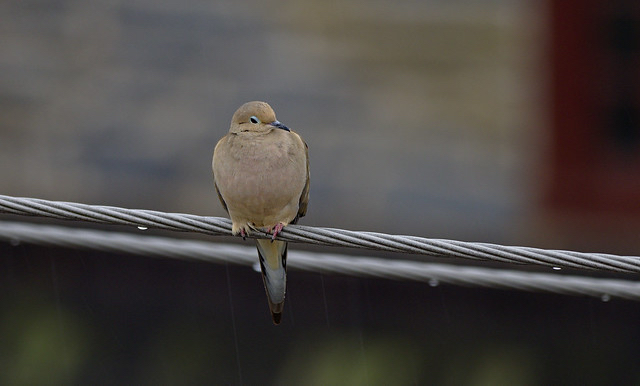BY KIERAN LINDSEY, PhD
It’s a fine world, though rich in hardships at times. ~ Larry McMurtry
 There’s a sweetness in the lament of a Mourning Dove (Zenaida macroura) that makes the sorrow bearable, and believable. Theirs isn’t an pop tune about a hookup with a hook, or a power ballad tale of infatuation, thrill, and transitory heartbreak. When Mourning Doves call I hear a country-western melody about spacious, isolated landscapes and complicated lives composed of joy and calamity, love and betrayal, not to mention good and evil that can’t be easily differentiated by the color of someone’s hat.
There’s a sweetness in the lament of a Mourning Dove (Zenaida macroura) that makes the sorrow bearable, and believable. Theirs isn’t an pop tune about a hookup with a hook, or a power ballad tale of infatuation, thrill, and transitory heartbreak. When Mourning Doves call I hear a country-western melody about spacious, isolated landscapes and complicated lives composed of joy and calamity, love and betrayal, not to mention good and evil that can’t be easily differentiated by the color of someone’s hat.
 Country music has had it’s share of singers who could wail with convincing anguish on stage, then party ’til the cows came home once the show was over… so I have to wonder if the Mourning Dove’s high lonesome yodel —coo-OO, COO, coo — is simply part of the act. After all, that grievous angel cry is replaced by a jaunty whistle of wings every time they launch skyward.
Country music has had it’s share of singers who could wail with convincing anguish on stage, then party ’til the cows came home once the show was over… so I have to wonder if the Mourning Dove’s high lonesome yodel —coo-OO, COO, coo — is simply part of the act. After all, that grievous angel cry is replaced by a jaunty whistle of wings every time they launch skyward.
Plus, Mourning Doves are rarely alone and don’t seem to have much time in their lives to feel lonely. The whole clan is known to grow up fast, reaching sexual maturity at about 85 days old, and then pair up into monogamous ’til-death-do-we-part couples who take the directive to be fruitful and multiply seriously… like, up to twelve chicks in a single season serious (six broods of two chicks each). Both Mom and Dad are doting, active parents who share grocery shopping and child care equally, rarely leaving their babes unsupervised by at least one adult at all times.
 The end of the lovey-dovey breeding season shouldn’t bring on the lonesome blues either, because that’s when the community flocks together in a big way. They go on group picnics, gobbling up seed in open fields or from the ground beneath backyard feeders until their crops are full, then settle onto fences, or walls, or telephone wires to digest the meal and the days events. They go drinking together, although for Mourning Doves that means sipping water from puddles and bird baths rather than throwing back with Jose Quervo at the neighborhood saloon.
The end of the lovey-dovey breeding season shouldn’t bring on the lonesome blues either, because that’s when the community flocks together in a big way. They go on group picnics, gobbling up seed in open fields or from the ground beneath backyard feeders until their crops are full, then settle onto fences, or walls, or telephone wires to digest the meal and the days events. They go drinking together, although for Mourning Doves that means sipping water from puddles and bird baths rather than throwing back with Jose Quervo at the neighborhood saloon.
The community even sleeps together— literally, not euphemistically — roosting in trees and other protected areas. Soothed by the safety of numbers, they’ll drop their heads comfortably between raised shoulders rather than tucking in beneath a wing or over the back as so many other birds do.
Even with all that social network support, there is a darker side to the life of a Mourning Dove that may explain their doleful song — they often end up on the wrong end of a gun. Mourning Doves are abundant, with a population estimated to be comprised of nearly 500 million individuals, but they are classified as a game bird and are the most frequently hunted species in North America. As many as 70 million are shot by hunters each year. Those who dodge the bullet still have to contend with the threat of lead poisoning from shot picked up from the ground while feeding.


 Despite what their name implies, though, when one of these doves becomes a widow or widower they don’t spend a lot of time in Brokenheartsville bemoaning their newly-single status. In fact, they pair up again PDQ. After all, ya can’t be fruitful all by your lonesome.
Despite what their name implies, though, when one of these doves becomes a widow or widower they don’t spend a lot of time in Brokenheartsville bemoaning their newly-single status. In fact, they pair up again PDQ. After all, ya can’t be fruitful all by your lonesome.